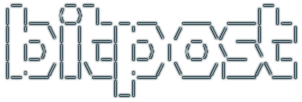A better Trader has been a work-in-progress project of mine for a very long time. The web UI was done in vanilla javascript, with old school imports, and PHP-style server-generated html, then added jQuery, then bootstrap, then started removing jQuery, then moved towards more-static html with JSON payloads for the data, then pined for better node imports, then then then. You get the point.
I went too long without a rewrite, so I recently became a weekend warrior skeletoning up the next gen web ui. Parts include:
- Vite due to its blazing hot-loading, tree-shaking, polyfilling goodness
- React because it’s good enough and gets the job done
- Bootstrap because I won’t have time to finish the mobile apps for a while
For my UIs, D3 is the most important library there is. So the skeleton is based on responsively displaying a handful of some of Mike Bostock’s greatest hits (imho). This was quite important to me because D3 examples have been somewhat obfuscated when they were migrated to Observables notebooks. The skeleton makes it much easier for me to quickly get working D3 examples by copying Mike’s Observables code into a cozy little container with all the bells and whistles in place.
Let me know what you think of it.
Reddit | Live Demo | GitLab | GitHub | Wiki










